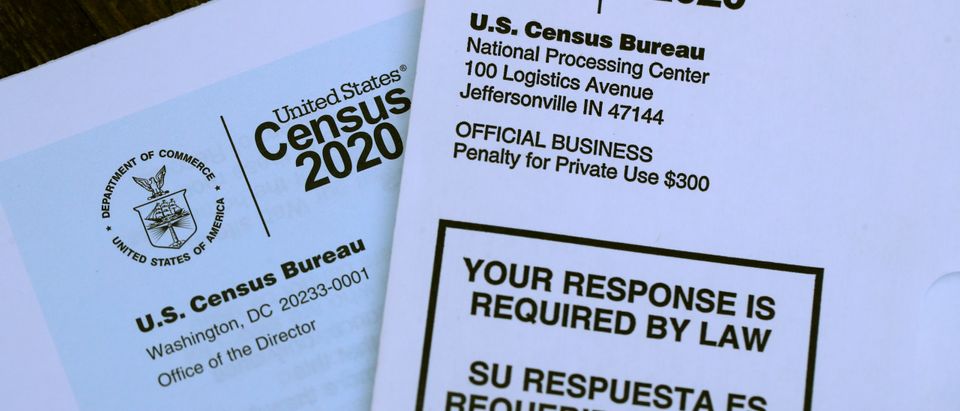FORMER REP. JASON LEWIS: How The Census Saved The Democrats

If you think the government only has trouble counting ballots, you ought to see what happens when bureaucrats try counting people. Just as self-government depends on honesty at the ballot box, our Republic’s safety valve of “voting with your feet” depends on an honest Census count.
But did we get one in 2020? (RELATED: LEWIS: Trump Took A Sledgehammer To The Establishment. America Needs Him To Do It Again In 2024)
I raised the alarm in my new book, “Party Animal, The Truth About President Trump, Power Politics & the Partisan Press,” when I wrote:
Census numbers forecasted that Minnesota was scheduled to lose a congressional seat, right up until “blue state” numbers miraculously shot up in contrast to the usually reliable December estimates.
The Bureau has admitted it “overcounted” Minnesota, which helps explains why DFL Chair Ken Martin giddily touted “the state with both the highest census response rate in the nation at 75.1% and the highest voter turnout in the nation.”
Imagine that.
Understand, had Minnesota and a few other states lost the House seats they were supposed to, representation in the next Congress might have looked entirely different. After all, Republicans easily won the nationwide popular vote in the midterms but underperformed in seats gained.
A blue-state exodus left Democrats in control to elect, state by state, the same number of House members respectively.
Mr. Martin’s Democrat-Farm-Labor party has turned Minnesota into a cold California, with state taxes and crime competing for the top spot. Indeed, while the Twin Cities were setting homicide records, Minnesota was still taxing pensions, Social Security and capital gains with the fourth highest top income tax rate. The state ranks 45th in business climate, according to the Tax Foundation.
Good thing we’ve got great weather.
The result is small business flees while Minnesota’s woke corporate elite becomes more entrenched with the DFL. But workers are leaving too. By the time George Soros’ Open Society Center was funding a “defund the police” ballot initiative in Minneapolis, 15,000 more people had already left the metro.
Statewide, almost 40,000 taxpayers and dependents fled since 2011 with another 13,000 leaving in 2021 alone. Were it not for foreign immigrants, legal and illegal, Minnesota’s population would be in an even greater free fall. Census numbers confirm that the state’s net domestic migration has turned negative.
Ironically, the state’s lower unemployment figures confirm it as well. Minnesota had slightly fewer people employed in 2022 than it did pre-pandemic. There’s nothing “progressive” about a shrinking workforce — or folks dropping out altogether due to an infamously generous welfare state.
Which, by the way, is about to receive even more in federal funds due to errant census numbers that will divvy up a disproportionate share of $1.5 trillion going to overcounted “blue” states over the next 10 years.
Amazingly, none of it made a difference in Minnesota’s calamitous midterm where radical Democrats gained control of every statewide constitutional office along with both legislative chambers. But the wayward Census count might have.
As Hans Von Spakovsky, former Justice Department lawyer and FEC commissioner, notes, the Census Bureau:
Overcounted the population of eight states, all but one of which is a blue state … Minnesota, according to the original census report, would have lost a congressional seat during reapportionment if it had 26 fewer residents; the survey shows the state was overcounted by 216,971 individuals. Similarly, Rhode Island would have lost a seat if the Census Bureau had counted 19,000 fewer residents. It turns out that the state was overcounted by more than 55,000 individuals … Texas and Florida should each have received an additional seat in the House. Rhode Island and Minnesota should each have lost a congressional seat — but didn’t. Colorado was given an additional seat it didn’t deserve.
Indeed, had Minnesota gone from eight House districts to seven, not only would that have affected the electoral college vote, but also the make-up of the state’s congressional delegation. Urban districts might have been combined and suburban ones redrawn in a meaningful fashion.
As it stands, I might be the last Republican elected to Minnesota’s 2nd district.
It is — as I mentioned in a previous newsletter — becoming very difficult to reconcile how voters somehow decided not to throw out the party in power in the 2022 midterm when they’ve consistently done it in past under far more favorable economic circumstances.
Maybe that’s just Minnesota Nice, a misleading euphemism for an upper Midwest “Stockholm syndrome” that has taught enough residents to heartily embrace policies that aren’t in their own interests.
Then again, maybe it’s the “swamp” all over again.

No comments:
Post a Comment